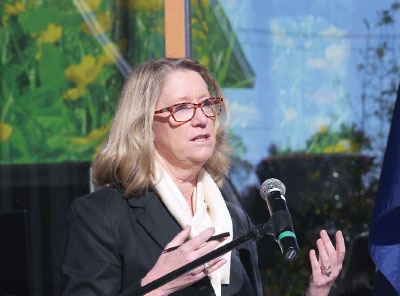APA Task Force on Psychiatric Beds to Host a Town Hall During Annual Meeting
Abstract
The town hall will be an opportunity to solicit data about community-level variables necessary to refine the model for determining psychiatric bed needs.
The APA Presidential Task Force on Assessment of Psychiatric Bed Needs in the United States will introduce a model for determining the number of psychiatric beds needed in any community during a town hall at APA’s 2021 online Annual Meeting.
The task force was created last year by APA President Jeffrey Geller, M.D., M.P.H., and charged with producing a model that communities can use to determine how many psychiatric beds are necessary to serve patients in that community, taking into account as many variables as possible that may inform the answer.

Helping communities determine how many psychiatric beds they need is vitally important because that number determines so much else about the care of people with mental illness in their area, says Anita Everett, M.D.
Chaired by past APA President Anita Everett, M.D., the task force comprises more than 30 APA leaders, other mental health professionals who are experts in health services and population health, and members of the APA administration. The task force was asked to deliver a white paper that includes a workable model that can be refined and updated over time (see Psychiatric News).
In an interview with Psychiatric News, Everett said the town hall will be a crucial venue for discussing the white paper and disseminating the model developed by the task force.
It will also be an opportunity for psychiatrists to talk about the kind of community-level variables that will help refine the model. These factors include the extent and type of outpatient services available that might mitigate the need for inpatient care as well as the different sectors of a fragmented mental health system offering overnight beds.
A 2017 report by the National Association of State Mental Health Program Directors and the Treatment Advocacy Center titled “Beyond Beds” found that by 2014, there was a wide range of community services, as well as bedded psychiatric services. The latter included inpatient psychiatric beds in general hospitals with separate psychiatric units (30,864), inpatient beds in private psychiatric hospitals (24,804), inpatient psychiatric patients who were placed in medical/surgical units (an arrangement referred to as “scatter beds,” of which there were 8,006), inpatient psychiatric beds in Veterans Affairs hospitals (3,124), and inpatient beds in other specialty mental health centers (3,499).
Adding to the calculation complexity are psychiatric beds in nursing homes and various kinds of residential treatment centers and settings (child and adolescent and geriatric facilities, rehabilitation facilities, group homes) that were not reportable to public agencies (see Psychiatric News).
“One thing all of us have learned as we have looked at this problem is just how complex and multilayered these systems are,” Everett told Psychiatric News.
But she reiterated the importance of helping communities determine how many beds they need—she has called it the “holy grail”—because that number determines so much else about the care of people with mental illness in a given area. A shortage of psychiatric beds in public and general community hospitals results in overburdened emergency departments and outpatient services, and, in the worst case, patients become homeless or enter the criminal justice system.
The model as currently configured is rudimentary but was designed (with the help of systems and engineering experts who are part of the task force) to accommodate the multitude of variables that influence the need for beds. Everett likened the process to machine learning, whereby the model “learns” and becomes more sophisticated as it gathers more information.
Everett will be joined at the town hall by other task force members and representatives of the APA Board of Trustees. They include Mark Olfson, M.D., M.P.H., a professor of psychiatry, medicine, and law and a professor of epidemiology at Columbia University; Debra Pinals, M.D., chair of the APA Council on Psychiatry and Law and a professor of psychiatry at the University of Michigan; Robert Trestman, M.D., Ph.D., chair of psychiatry at Virginia Tech Carilion School of Medicine; Carlotta Freeman, M.D., a geriatric psychiatrist at Barbour and Floyd Medical Associates in Marina Del Rey, Calif., and chair of the task force subgroup on population variables; Isabel Norian, M.D., a community psychiatrist serving adults with intellectual and developmental disabilities through telehealth and chair of the subgroup on community system contributors and variables; APA Secretary Sandra DeJong, M.D., M.Sc.; and Kristen Lich, M.D., an associate professor of health policy and management at the University of North Carolina, Chapel Hill. ■
“Presidential Town Hall: The Assessment of Psychiatric Bed Needs in the U.S.” will be held Sunday, May 2, from 4 p.m. to 5:30 p.m.



